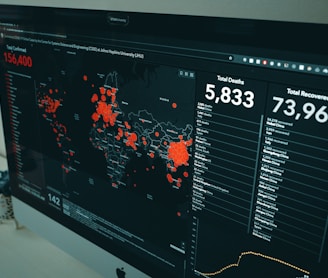The Power of Visualization: How to Make Data Come Alive
In today's data-driven world, businesses are collecting more data than ever before. However, data alone is not enough to make informed decisions. To truly understand what the data is telling us, we need to be able to visualize it in a meaningful way. In this article, we'll explore the power of visualization and provide guidance on how to make data come alive through effective data visualization techniques.
Why Visualization Matters
Visualization is a powerful tool that can help us to better understand and interpret complex data sets. When data is visualized, patterns and trends become more apparent, and insights are easier to derive. Visualization can also help to communicate data insights to others in a way that is easy to understand and digest. This is particularly important when communicating data insights to non-technical stakeholders, who may not have the same level of data literacy.
Effective Data Visualization Techniques
To make data come alive, it's important to use effective data visualization techniques. Here are a few tips to keep in mind when creating visualizations:
Keep it simple: The most effective visualizations are often the simplest. Avoid cluttering your visualizations with unnecessary details and focus on the key insights that you want to communicate.
Use the right chart type: Different types of data are best suited to different types of charts. For example, line charts are best for showing trends over time, while bar charts are best for comparing values.
Choose the right colors: Color can be used to highlight important information and make visualizations more engaging. However, it's important to use colors that are easy to distinguish and avoid using too many colors in one visualization.
Tell a story: Visualizations should be used to tell a story about the data. Use annotations and labels to provide context and explain the insights that are being communicated.
Tools for Data Visualization
There are many tools available for creating data visualizations, ranging from simple tools like Excel and Google Sheets to more advanced tools like Tableau and Power BI. When choosing a tool, consider the level of data complexity and the type of visualizations that you want to create. Some tools may be better suited to certain types of data or visualizations.
Conclusion
Data visualization is a powerful tool that can help to make data come alive and provide valuable insights. By using effective data visualization techniques, such as keeping it simple, using the right chart type, choosing the right colors, and telling a story, businesses can communicate data insights in a way that is easy to understand and engage with. With the right tools and techniques, anyone can become a master of data visualization and unlock the power of their data.


